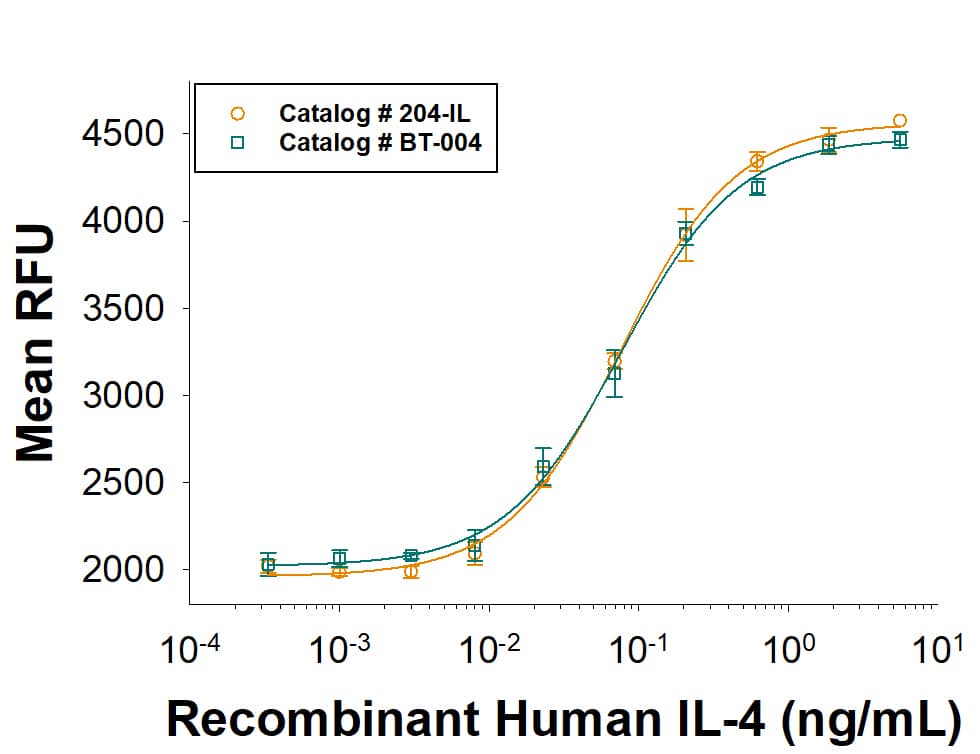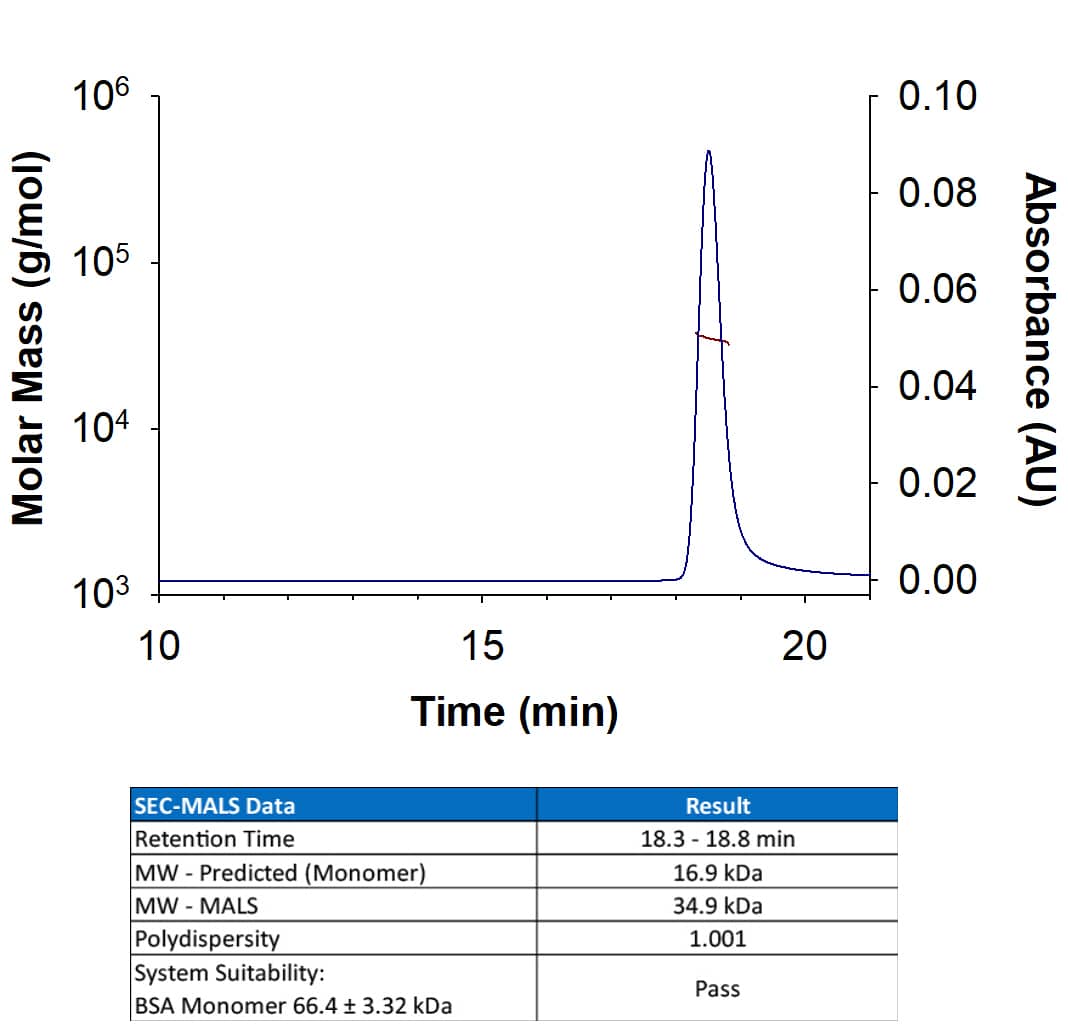Human TSLP Biotinylated Antibody Summary
Tyr29-Gln159
Accession # Q969D9
Customers also Viewed
Applications
Human TSLP Sandwich Immunoassay
Please Note: Optimal dilutions should be determined by each laboratory for each application. General Protocols are available in the Technical Information section on our website.
Preparation and Storage
- 12 months from date of receipt, -20 to -70 °C as supplied.
- 1 month, 2 to 8 °C under sterile conditions after reconstitution.
- 6 months, -20 to -70 °C under sterile conditions after reconstitution.
Background: TSLP
Thymic Stromal Lymphopoietin (TSLP) was originally identified as an activity from the conditioned medium of a mouse thymic stromal cell line that promoted the development of B cells (1-3). The activities of mouse TSLP overlap with, but are distinct from, those of mouse IL-7. Both mouse TSLP and IL-7 can co-stimulate growth of thymocytes and mature T cells, and support B lymphopoiesis in long-term cultures of fetal liver cells and bone-marrow cells. Whereas mouse IL-7 facilitates the development of B220+/IgM- pre-B cells, mouse TSLP promotes the development B220+/IgM+ B cells. Human TSLP was reported to preferentially stimulate myeloid cells; inducing the release of T cell-attracting chemokines from monocytes and enhancing the maturation of CD11c+ dendritic cells. Human TSLP cDNA encodes a 159 amino acid (aa) residue precursor protein with a 28 aa signal sequence (4, 5). Within the mature region, six of the seven cysteine residues present in the mouse TSLP involved in intramolecular disulfide bond formation are conserved in the human TSLP. Human TSLP shares approximately 43% aa sequence identity with mouse TSLP. By Northern blot analysis, human TSLP expression has been detected in many tissues with the highest expressions in heart, liver, testis and prostate. TSLP signals through a heterodimeric receptor complex that consists of IL-7 R alpha and the TSLP R, a member of the hemopoietin receptor family most closely related to R gamma c.
- Sims, J.E. et al. (2000) J. Exp. Med. 192:671.
- Park, L.S. et al. (2000) J. Exp. Med. 192:659.
- Pandey, A. et al. (2000) Nature Immunol. 1:59.
- Reche, P.A. et al. (2001) J. Immunol. 167:336.
- Quentmeier, H. et al. (2001) Leukemia 15:1286.
Product Datasheets
Citations for Human TSLP Biotinylated Antibody
R&D Systems personnel manually curate a database that contains references using R&D Systems products. The data collected includes not only links to publications in PubMed, but also provides information about sample types, species, and experimental conditions.
2
Citations: Showing 1 - 2
Filter your results:
Filter by:
-
Constitutive and inducible thymic stromal lymphopoietin expression in human airway smooth muscle cells: role in chronic obstructive pulmonary disease.
Authors: Zhang K, Shan L, Rahman MS, Unruh H, Halayko AJ, Gounni AS
Am. J. Physiol. Lung Cell Mol. Physiol., 2007-05-18;293(2):L375-82.
Species: Human
Sample Types: Cell Culture Supernates
Applications: ELISA Development -
Epithelial cells trigger frontline immunoglobulin class switching through a pathway regulated by the inhibitor SLPI.
Authors: Xu W, Xu</LastName><ForeName>We W</Initial, He B, Chiu A, Chadburn A, Shan M, Buldys M, Ding A, Knowles DM, Santini PA, Cerutti A
Nat. Immunol., 2007-01-28;8(3):294-303.
Species: Human
Sample Types: Whole Tissue
Applications: IHC-Fr
FAQs
No product specific FAQs exist for this product, however you may
View all Antibody FAQsIsotype Controls
Reconstitution Buffers
Staining Reagents
Supplemental Cell Selection Products
Supplemental ELISA Products
Reviews for Human TSLP Biotinylated Antibody
There are currently no reviews for this product. Be the first to review Human TSLP Biotinylated Antibody and earn rewards!
Have you used Human TSLP Biotinylated Antibody?
Submit a review and receive an Amazon gift card.
$25/€18/£15/$25CAN/¥75 Yuan/¥2500 Yen for a review with an image
$10/€7/£6/$10 CAD/¥70 Yuan/¥1110 Yen for a review without an image















